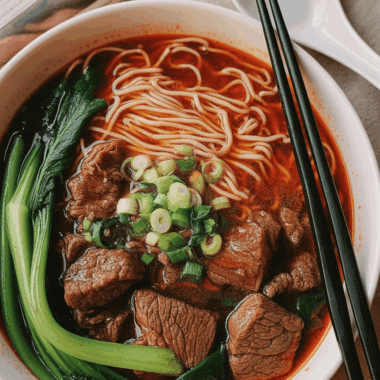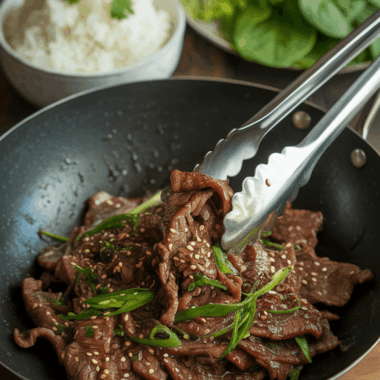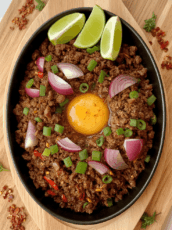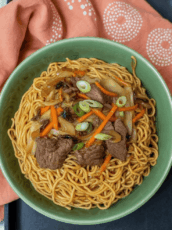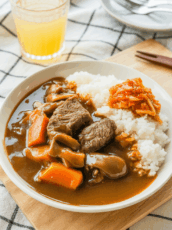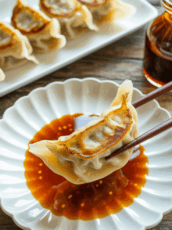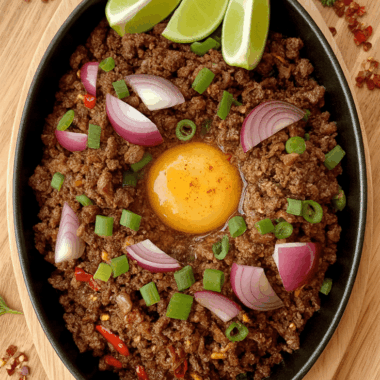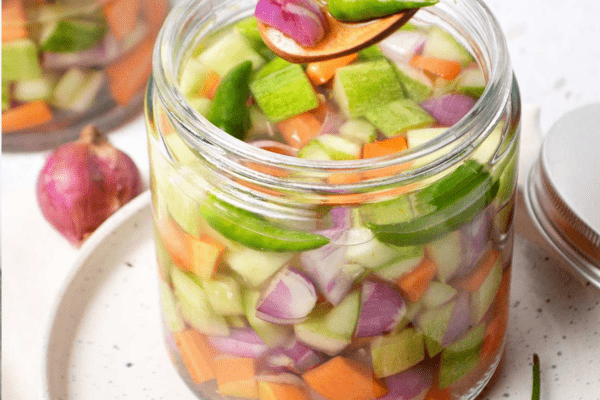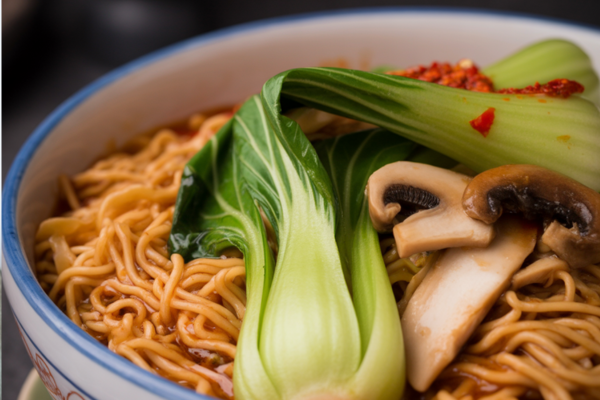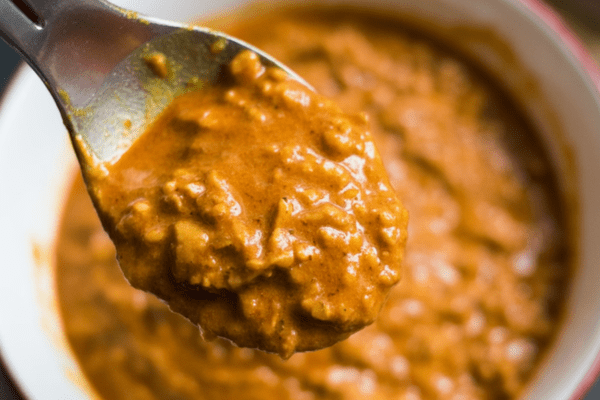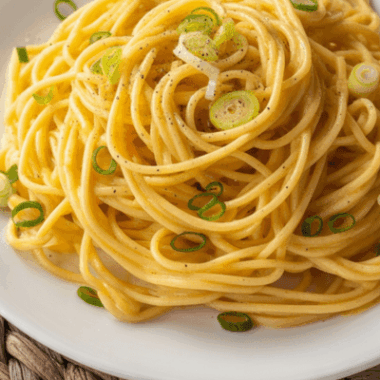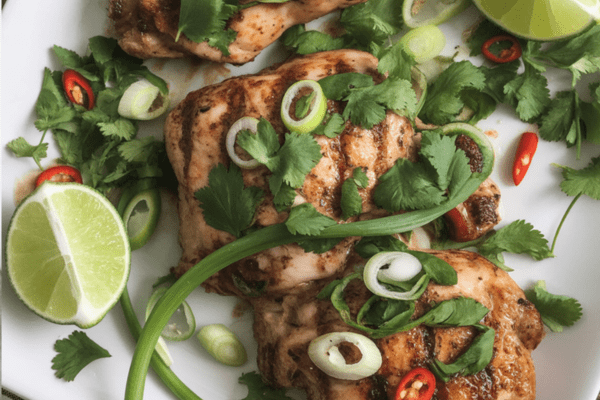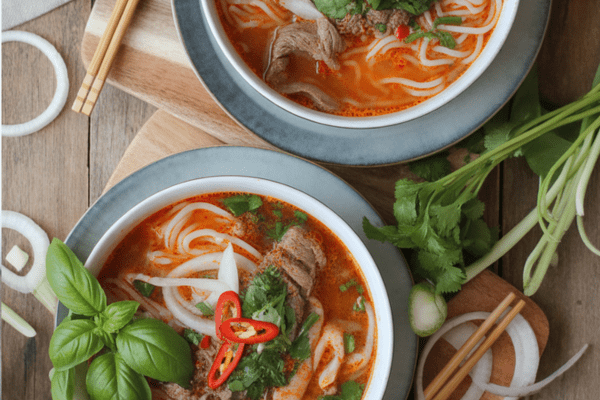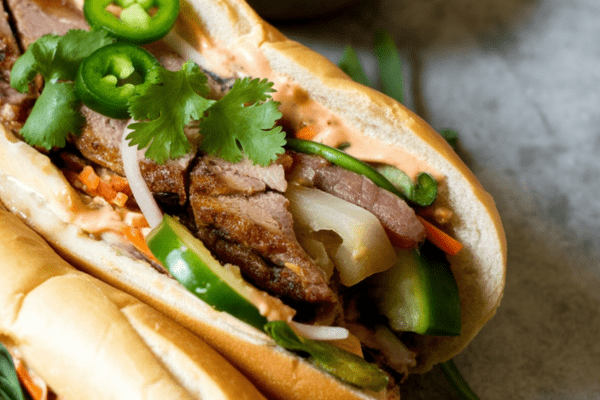There’s something about Korean braised tofu—Dubu Jorim—that’s so satisfying despite its simplicity. Imagine firm tofu seared to golden perfection, soaking up a punchy, spicy soy-based sauce.
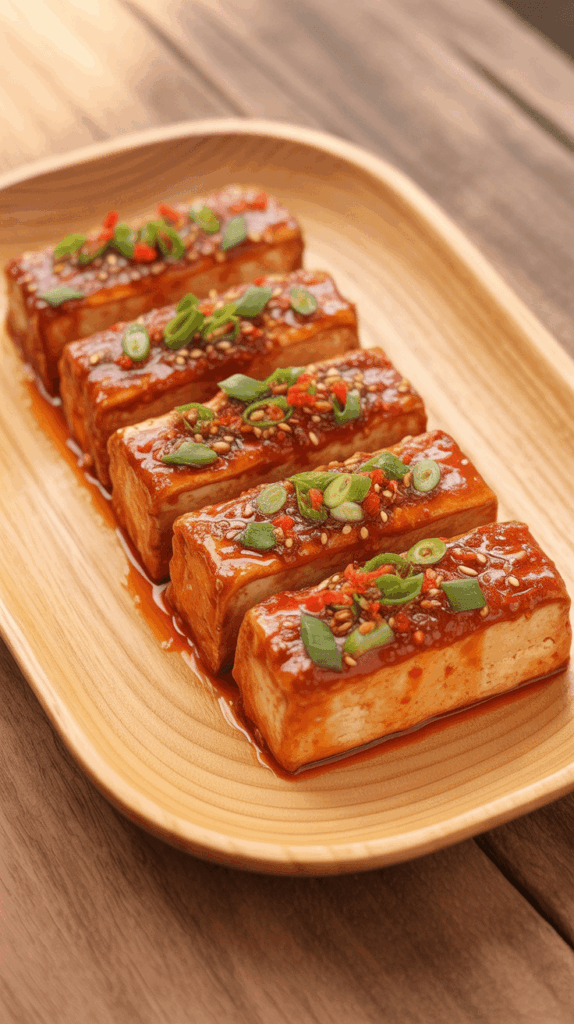
I make this often on busy weeknights when I want something hearty yet light, and it’s the kind of dish that feels right at home next to a big bowl of steamed rice. This is one of those recipes you’ll come back to, especially if you love bold, savory flavors that come together fast.
Why This Spicy Braised Tofu Always Wins
I’m a big fan of dishes that don’t need a ton of ingredients or time but still taste like you really put in effort. This one does that beautifully.
It’s one-pan, quick to make, and full of flavor. The tofu turns tender yet holds its shape, and the sauce clings to it in the best way. I love serving it hot with rice, but it’s just as good cold, straight from the fridge the next day.
It also works well as part of a banchan spread. If you’re like me and love Korean side dishes—like spicy cucumbers, stir-fried spinach, or braised potatoes—this tofu fits right in.
Ingredients I Always Use (and Why)
Here’s what I keep on hand to make this whenever the craving strikes:
- Firm or extra-firm tofu – Essential for getting that nice golden sear without it falling apart. I always pat it dry so it browns better.
- Soy sauce (low sodium) – Balances the saltiness so the spicy flavors can shine.
- Water – Helps thin the sauce to the right consistency.
- Gochugaru (Korean chili flakes) – Gives that signature color and heat. I adjust it depending on who’s joining me for dinner. My family likes it spicy, so I usually go with the full tablespoon.
- Sugar – Just enough to round out the salt and spice.
- Sesame oil – For that unmistakable nutty finish.
- Sesame seeds – A little crunch never hurts.
- Garlic – Always fresh.
- Scallions – For color and sharpness.
- Neutral oil – I typically use vegetable oil for its high smoke point.
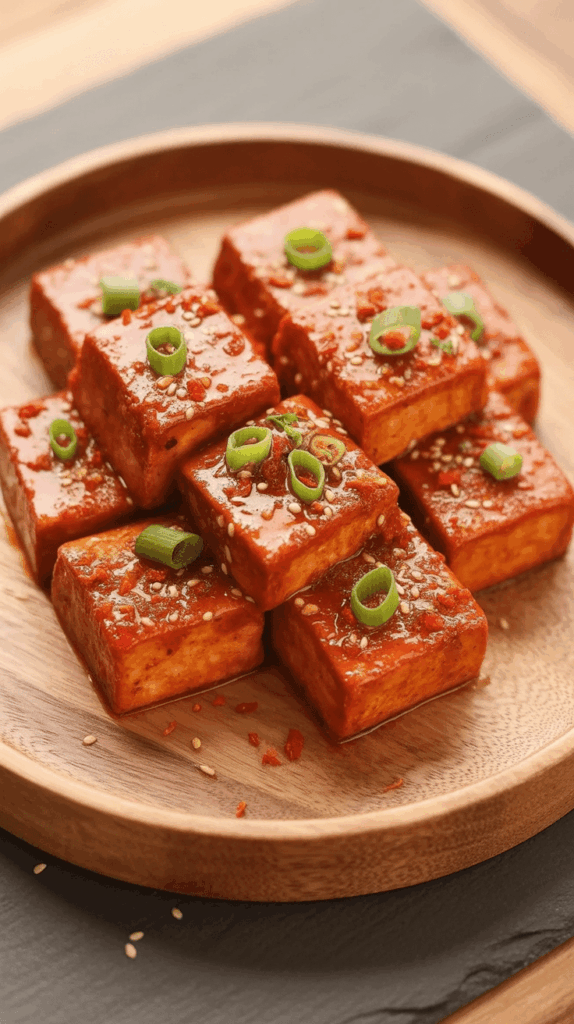
Picking the Right Tofu for Braising
I learned the hard way that not all tofu is equal. The first time I made this, I used soft tofu and it completely fell apart in the pan. Now I always use extra-firm or firm.
Soft tofu is better for soups and gentle steaming—it’s so delicate it practically melts in your mouth. But for pan-frying and braising, firm or extra-firm tofu is perfect. It holds up beautifully and absorbs the sauce without losing its shape.
If you’re shopping at an Asian grocer, you’ll see all the varieties stacked in the fridge. Don’t overthink it—grab the firm or extra-firm.
Step-By-Step: How I Make It at Home
1. Get the Tofu Ready
I like cutting my tofu into thick rectangles—about 3/4 inch is my sweet spot. It gives you more surface area for browning and doesn’t break easily.
Pressing the tofu with paper towels is my non-negotiable step. Too much moisture will steam it instead of searing it, and you’ll miss out on that gorgeous crust.
2. Mix Up the Sauce
I always prep the sauce before cooking so it’s ready to go. It’s just a quick mix of soy sauce, water, gochugaru, sugar, sesame oil, sesame seeds, garlic, and scallions.
It smells so good even before it hits the pan—I sometimes catch myself tasting it with a spoon.
3. Sear the Tofu
I heat my neutral oil over medium-high in a non-stick pan. When it’s hot enough, I lay in the tofu carefully and listen for that satisfying sizzle.
About 2 minutes per side gets me a lovely golden crust. If I’m feeling thorough (or fussy), I brown the edges too.
4. Braise It in the Sauce
Once the tofu is golden, I lower the heat and pour in the sauce.
Here’s where the magic happens. The sauce bubbles gently, thickens, and soaks right into the tofu. I spoon it over the pieces as it cooks for about 5–6 minutes, making sure every bite is loaded with flavor.
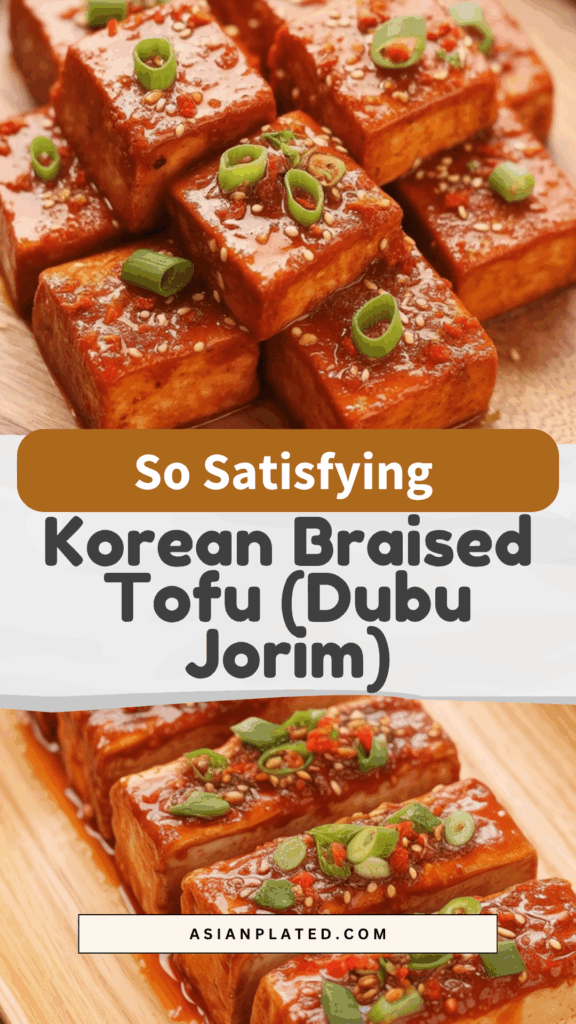
My Best Tips for Perfect Braised Tofu
- Pat it dry – Always remove as much moisture as you can before frying.
- Use a non-stick pan – Helps prevent sticking and makes cleanup easy.
- Don’t rush the sear – Let the tofu develop color for deeper flavor.
- Taste as you go – I sometimes sneak a bite while braising to adjust the spice or salt.
Making This Ahead and Storing Leftovers
This is one of those dishes that actually improves with time. The tofu keeps soaking up the sauce in the fridge, so it’s even better the next day.
I store it in an airtight container for up to 4 days. When reheating, I use the microwave for speed, but a quick warm-up in a pan works well too.
If you’re planning a Korean-inspired meal prep, this tofu is perfect—it holds up well in lunch boxes and tastes great cold.
Serving Ideas From My Own Table
Most often, I keep it simple with a bowl of hot rice, some kimchi, and maybe a fried egg on top. But if I’m serving guests, I’ll lay it out with other sides:
- Spicy cucumber salad
- Stir-fried spinach with garlic
- Braised potatoes in soy sauce
- A light miso or seaweed soup
It’s fun to mix and match, and everyone builds their own little plate.
Korean Braised Tofu (Dubu Jorim)
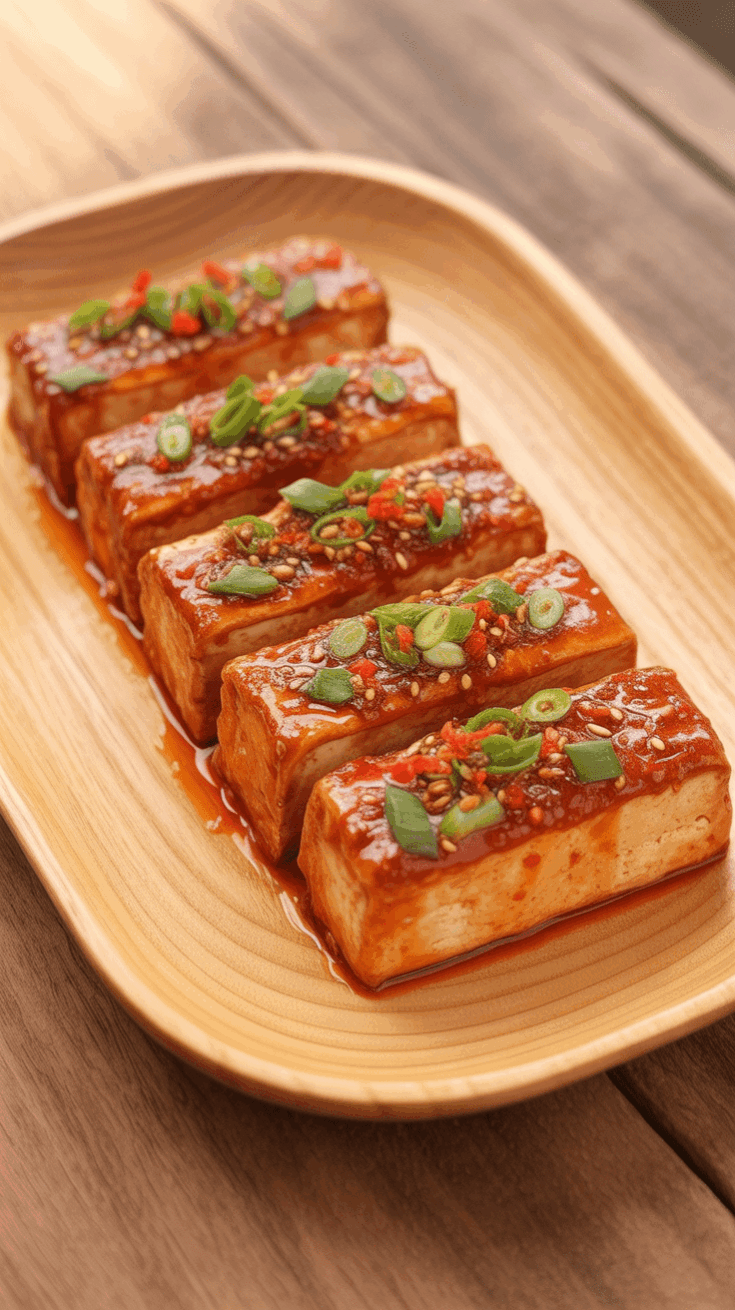
If you're craving something quick, comforting, and full of bold Korean flavor, this braised tofu dish is a must. The tofu is first pan-seared until golden, then simmered in a spicy-savory sauce that clings to every bite. It’s perfect over a bowl of warm rice, and it just so happens to be both hearty and plant-based.
Ingredients
- 2 tablespoons neutral oil (for frying)
- 1 (14 oz) package firm tofu
- 2 cloves garlic, finely minced
- 1 scallion, chopped
- 1 tablespoon sesame oil
- 1 tablespoon Korean red pepper flakes (gochugaru)
- 1/2 tablespoon sesame seeds
- 1/2 tablespoon sugar
- 1/4 cup water
- 1/4 cup light soy sauce
Instructions
- Prep the tofu: Slice the tofu lengthwise into ½-inch thick slabs. For best texture, pat them dry with paper towels to remove excess moisture.
- Mix the sauce: In a small bowl, stir together the soy sauce, water, gochugaru, sugar, sesame oil, sesame seeds, garlic, and scallions. Set this aside—the magic is in this mix.
- Pan-sear the tofu: Heat the neutral oil in a skillet over medium-high heat. Once hot, gently place the tofu slices in the pan and cook each side for about 2 minutes, or until a light golden crust forms.
- Braise: Reduce the heat to medium. Pour the sauce mixture over the tofu in the pan. Let everything simmer together for around 5–6 minutes, allowing the sauce to thicken slightly and soak into the tofu.
- Serve: Remove from heat and serve hot, ideally over freshly steamed rice. Garnish with extra scallions or sesame seeds if you like.
Notes
- Firm tofu holds up beautifully during pan-frying and braising. Softer varieties might break apart.
- Gochugaru adds a smoky, moderate heat—adjust the quantity to suit your spice preference.
- If you want extra depth, a splash of mirin or rice vinegar can brighten the sauce.
Nutrition Information:
Yield: 3 Serving Size: 1Amount Per Serving: Calories: 185Total Fat: 17gSaturated Fat: 2gTrans Fat: 0gUnsaturated Fat: 14gCholesterol: 0mgSodium: 1455mgCarbohydrates: 6gFiber: 1gSugar: 3gProtein: 5g
Asianplated.com, occasionally offers nutritional information for recipes contained on this site. This information is provided as a courtesy and is an estimate only. This information comes from online calculators. Although allchickenrecipes.com attempts to provide accurate nutritional information, these figures are only estimates.
Common Questions I Get About This Dish
Can I use soft tofu?
I wouldn’t recommend it here. It breaks apart too easily during frying and braising.
Is it very spicy?
It has a kick, thanks to the gochugaru, but you control the heat. Start with less if you’re unsure and add more as you go.
Can I make it oil-free?
Technically you can skip the pan-fry step and just simmer the tofu in sauce, but you’ll lose that caramelized crust that makes this dish so good.
If you’re new to Korean cooking, this is a perfect place to start. It’s simple, full of flavor, and makes tofu anything but boring. I hope you’ll love it as much as I do, and maybe even make it part of your regular rotation.
Try other Korean recipes:

